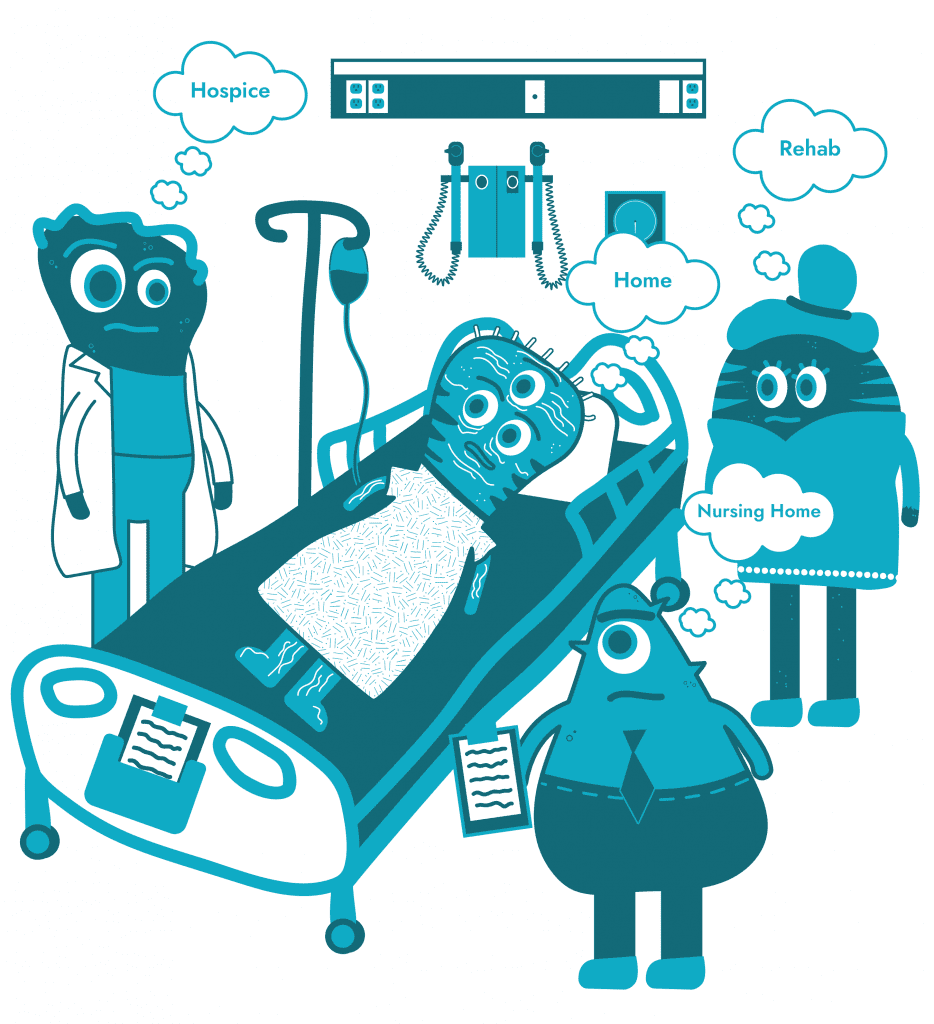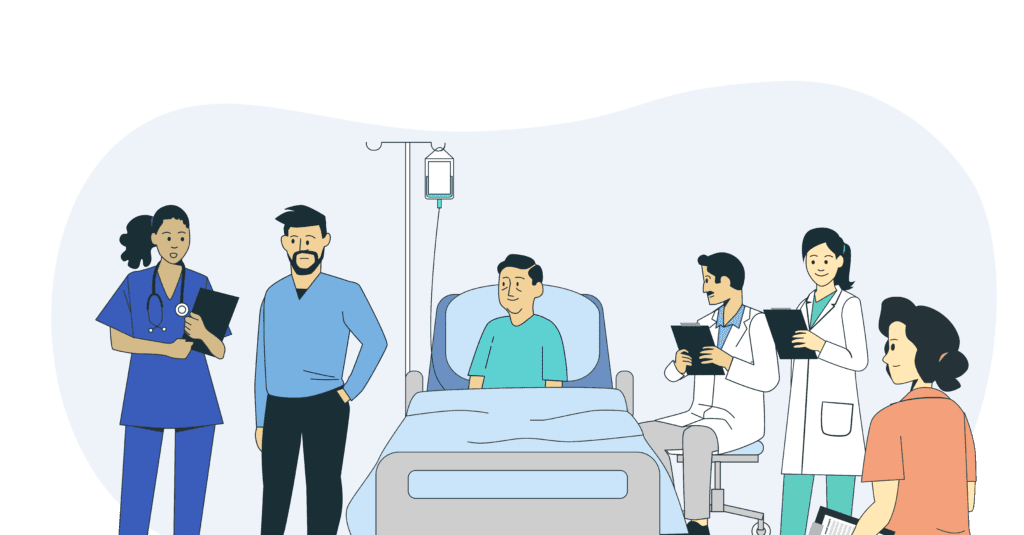Orchestration
Orchestration & Collaboration
A shift in leadership and management paradigms in the last 20 years has moved healthcare organizations towards a more sociotechnical focus and maturity: organizations that prioritize good communication, cooperation, coordination, supervision and participatory design. This paradigm shift has largely been driven by regulatory requirements, resource optimization, staff retention and consumer satisfaction. However, achieving success in these environments requires a different type of leader, one more attuned as conductors or orchestrators of interactions of different stakeholder groups and professional specialities1. Such leaders must optimize three types of organizational interactions: supervision, mediation and cooperation by mutual understanding. At the same time, many healthcare organizations have recognized the benefits of moving from a traditional hierarchical model of leadership to more of a clinical microsystem design with an orchestrator supported leadership model.
A collaborative network of experts
In those clinical environments that have evolved this more sociotechnical approach to design, the organization develops more as a collaborative network of experts: individuals, teams/units, service lines or specialties. Consequently, leadership maturity and success relies on the various interactions among the experts. Hence, the appropriateness of the orchestra metaphor: each musician while individually skilled for a given type of instrument, must understand the appropriate shared music theory and have conductors who coordinate the orchestra, or else the symphonic output will be poor.


Integrating into daily care
We can apply this model in particular to healthcare units, through the utilization of the Accountable Care Unit, with a co-leadership model of nurse, physician and allied health or patient representative, and structured interdisciplinary bedside rounds as a core process to bring together the symphony of the care team each day with patients and families.
For ACUs to be successful, the co-leads must effectively coordinate and optimize resources to best achieve units outcomes using targeted specific strategies, processes and tools. All the while, aligning their work with organizational goals2.
For interdisciplinary rounds to be successful, the team of experts must work collaboratively together with a shared mental model of the process (who says what, where and when). Team members must have familiarity and competency with their expected inputs and the delivery of same. The team must also collaborate and coordinate themselves such that resources are optimized and consumers (patients and staff) are satisfied with the team product: typically a shared integrated and understood plan for the day and plan for discharge3.
Maximizing the team
To maximize the value of the process, individual team members should have self-efficacy: a context specific assessment of competence to perform a specific task or range of tasks in a given domain (i.e. an individual’s judgment of their capabilities to complete a given goal)4. Self-efficacy is driven by beliefs about one’s skills or abilities, and the specific context in which those skills or abilities will be applied. It is concerned with the contextually embedded orchestration of skills that lead to performance4. Where self-efficacy is diminished, the team must orchestrate and collaborate to maintain team efficacy and effectiveness and deliver high-quality patient centered care5.


Optimizing Team Rounds
In great SIBR rounds, multiple team members orchestrate to make the team more effective. Orchestration is a collective competence where team members notice team effectiveness and work together to improve it. You know you have high-potency SIBR when for example:
- Sensitive information is shared before going to bedside
- Team is efficient, without appearing hurried
- Patient & family participate and appear comfortable
- Open loops are closed, needs explored & met, new orders recorded
- Volunteering/voluntelling creates clear responsibility for actions.


Collective competencies
As a collective competence, SIBR requires:
- skilled individuals,
- awareness of each other,
- perception of the team’s overall performance, and
- knowledge of how to compensate together when necessary.
To optimize the team’s performance and until self-efficacy is achieved by individuals, we have created tools to support coaching and feedback for individuals, specific to the core stakeholder groups. This efficient on-ramp to success is critical to early interdisciplinary rounds success.
We also have tools to monitor and measure rounds performance using a mix of quantity and quality measures that support unit leadership monitoring and support corrective actions when dips in performance are identified.
To explore these concepts further and discover more practical strategies to develop orchestration and collaboration, and integrate other advanced teamwork concepts in your teams visit our Resources.